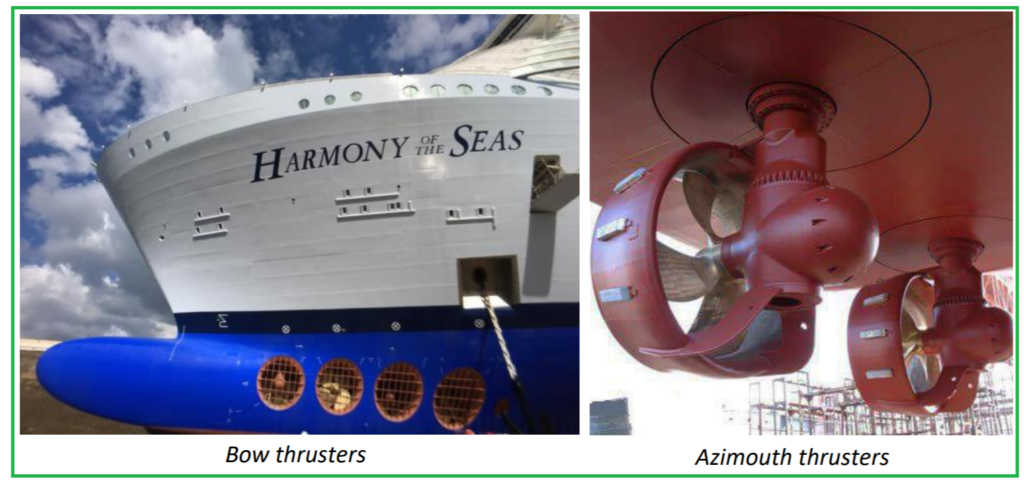A thruster is a propulsion device used on ships and other vessels to provide thrust in a specific direction. Thrusters are typically located at the bow or stern of a vessel and are used to improve maneuverability, especially in tight spaces or during docking and undocking procedures. They can be either fixed or steerable and may use various propulsion mechanisms such as propellers or water jets to generate thrust. Thrusters play a crucial role in allowing ships to navigate safely and efficiently in confined waters and challenging maritime environments.
What is Thruster?
Thrusters are transversal propulsion devices that are installed either at the bow or stern of a ship or boat to enhance its maneuverability. These thrusters play a crucial role in enabling vessels to operate more independently from tugs and improve maneuverability, especially at low speeds such as during port maneuvers. By directing thrust sideways, thrusters allow ships to navigate more effectively in tight spaces and make precise movements, enhancing overall control and safety during docking and maneuvering operations.
Thruster Types
There are three main types of thruster devices used on ships:
- Lateral or Tunnel Thruster: This type consists of a propeller installed in a transverse tunnel within the hull of the ship. The propeller generates thrust sideways, allowing the vessel to move sideways.
- Jet Thruster: Jet thrusters operate by drawing water from beneath the hull and expelling it to either side. This system enhances maneuverability by directing water jets sideways.
- Azimuthal Thruster: Azimuthal thrusters are capable of rotating 360 degrees, providing thrust in any direction. This flexibility allows for precise maneuvering in tight spaces.
Bow thrusters are particularly useful for docking, as they enable the vessel to turn to either side without relying solely on the main propulsion system. Larger vessels, such as passenger ships, may have multiple bow thrusters and stern thrusters to aid in maneuverability.

Tunnel thrusters, typically located below the waterline in the bow, assist in turning the ship and can sometimes eliminate the need for tugboat assistance during docking. However, it’s essential to consider the risk of tunnel emergence in heavy seas, as this can affect thruster performance and potentially damage the thruster and hull.
In ship design, incorporating thrusters can lead to significant modifications in hull form and general arrangement to improve hydrodynamic efficiency. Thrusters also offer advantages such as reduced vibration and noise, making them suitable for passenger vessels. Additionally, the use of thrusters may eliminate the need for traditional ship rudders, further enhancing maneuverability and control.